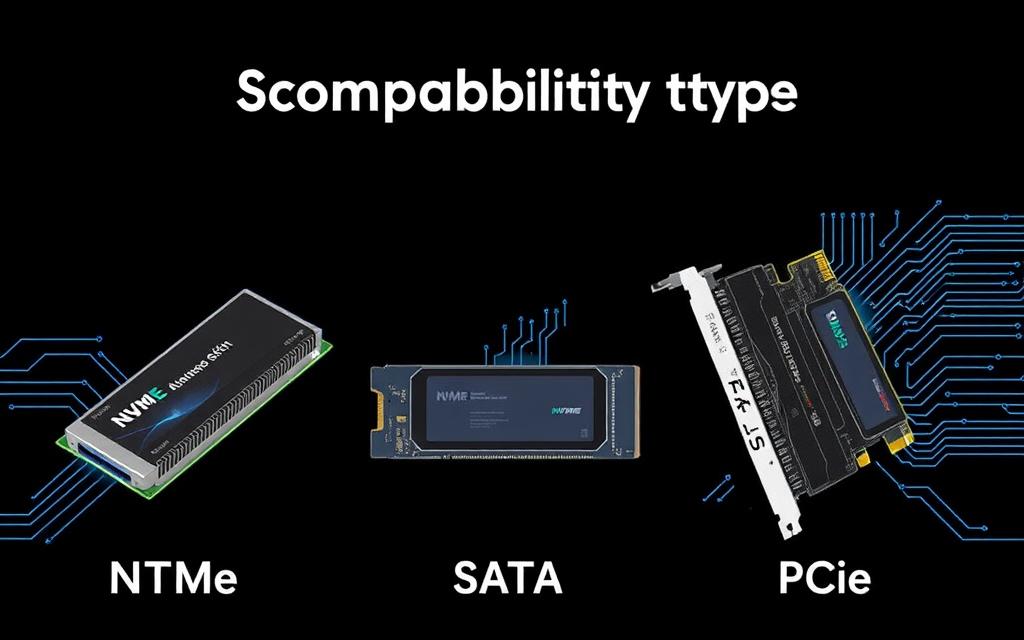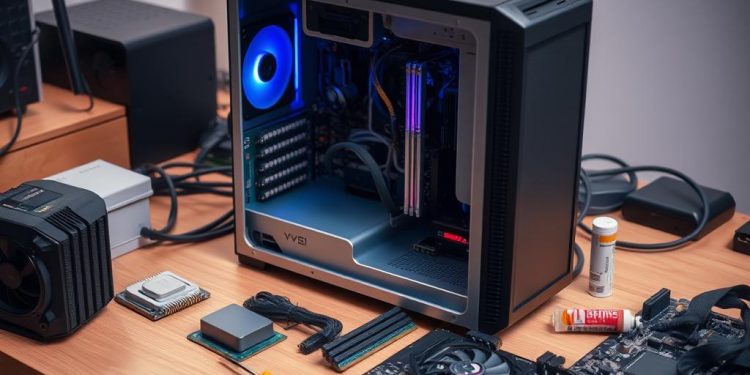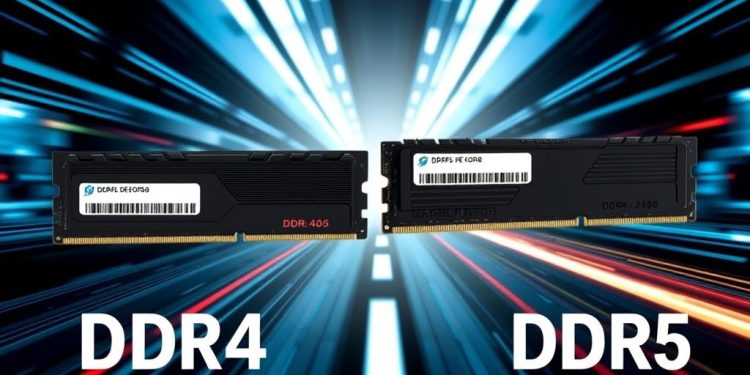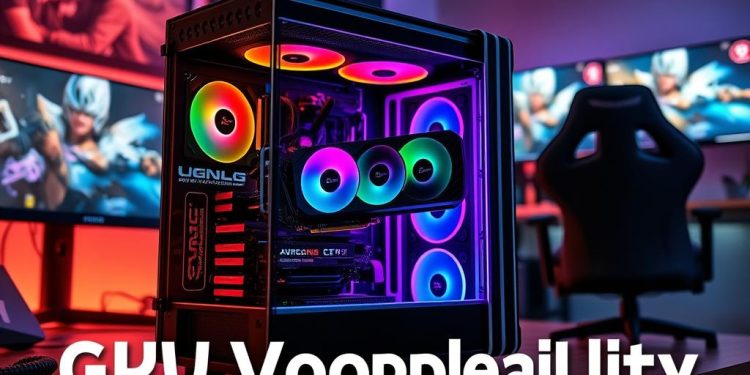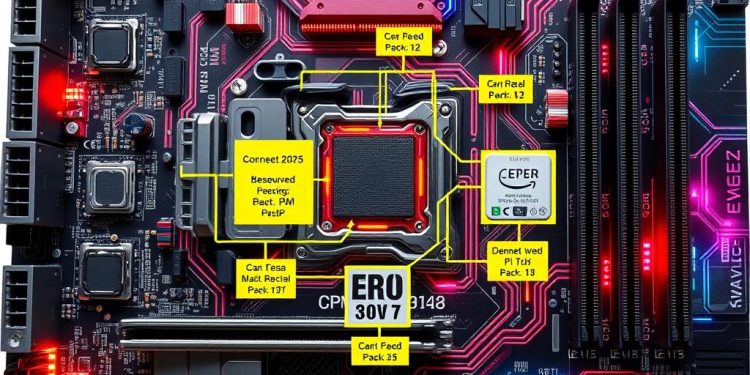In today’s fast-paced digital world, understanding SSD compatibility is crucial for maximizing your system’s performance. With various SSD types available, such as NVMe, SATA, and PCIe, choosing the right one can significantly impact your storage speed and overall efficiency. Each technology has evolved uniquely, leading to distinct characteristics that affect how they integrate with your hardware. By familiarizing yourself with these options, you can make informed decisions for SSD upgrades that will optimize your system’s capabilities.
Understanding SSD Types
Your next storage upgrade starts with understanding the various SSD types available in the market. Each type has distinct characteristics, making them suited for different applications. Let’s delve into the specifics of NVMe SSDs, SATA SSDs, and PCIe SSDs, focusing on their capabilities and advantages.
What are NVMe SSDs?
NVMe SSDs, which stands for Non-Volatile Memory Express, utilize the PCIe interface to provide unmatched storage speed and performance. This technology allows for read speeds that can soar up to 7,300 MB/s, greatly enhancing system responsiveness in data-intensive applications like gaming and content creation. The implementation of NVMe enables your system to achieve ultra-low latency and remarkably high throughput, making it the preferred choice in high-performance environments.
What are SATA SSDs?
SATA SSDs or Serial Advanced Technology Attachment SSDs have been the more common choice historically. They offer decent storage speed, with read rates peaking around 550 MB/s. While significantly faster than traditional hard drives, their performance pales in comparison to NVMe SSDs. Compatibility is one of the strengths of SATA SSDs, as they work with a wide range of systems and are often easier to integrate without advanced hardware requirements.
What are PCIe SSDs?
PCIe SSDs represent the backbone of modern storage solutions, allowing for multiple data lanes that significantly enhance storage speed. These drives can achieve up to 14,500 MB/s in advanced configurations. You can find PCIe interfaces in both NVMe and U.2 formats, the latter providing compatibility with traditional 2.5-inch drives. Particularly appealing for enterprise and high-end workstation applications, PCIe SSDs support hot-swapping, minimizing downtime during upgrades.
| SSD Type | Max Read Speed | Max Write Speed | Interface | Use Cases |
|---|---|---|---|---|
| 2.5″ SATA SSD | Up to 500MB/s | 450MB/s | SATA | General storage upgrades, older systems |
| PCIe 4.0 NVMe M.2 SSD | Up to 7,000MB/s | 7,000MB/s | PCIe | Gaming, content creation |
| U.2 SSD | Variable (based on configuration) | Variable (based on configuration) | PCIe | Enterprise, data centers |
Understanding these SSD types helps in choosing the right storage solution to meet your performance and compatibility needs. Keep in mind their unique features and advantages as you embark on your upgrade journey.
Comparing NVMe vs SATA SSDs
When evaluating NVMe vs SATA SSDs, understanding their performance differences becomes crucial. NVMe drives are engineered specifically for high-speed data transfer, capitalizing on the PCIe interface to achieve speeds that can surpass 5,000 MB/s. In contrast, SATA SSDs are limited to a maximum throughput of around 600 MB/s. This substantial gap in storage speed translates into noticeable benefits in boot times, file transfers, and application loading speeds, making NVMe the optimal choice for users with demanding performance needs.
Performance Differences
One of the most significant advantages of NVMe over SATA lies in its ability to handle multiple tasks simultaneously. NVMe drives can manage up to 64,000 parallel command queues, while SATA SSDs are restricted to just 32 I/O requests at a time. The PCIe 3.0 interface facilitates effective transfer rates of up to 16GB/s across multiple lanes, which far exceeds the fixed limitations of SATA technology. Reduced latency and superior throughput make NVMe a prime candidate for real-time applications like AI and machine learning.
Cost Considerations
Despite the performance advantages of NVMe SSDs, cost considerations play a vital role in the decision-making process. Generally, NVMe offers higher speeds and better efficiency, yet this comes at a premium price point. SATA SSDs remain budget-friendly alternatives that provide excellent value for everyday computing tasks. They are suitable for users who do not require the ultra-fast SSD performance that NVMe delivers.
While weighing SSD upgrades, it is essential to assess your specific needs. If you’re engaged in gaming or professional tasks where speed is critical, investing in an NVMe SSD could enhance overall performance significantly. Conversely, for general use or older systems, a SATA SSD provides adequate speed and functionality without breaking the bank.
Key Factors for SSD Compatibility
Selecting the right SSD for your computer system is critical, and the primary consideration must be motherboard compatibility. You need to ensure that your motherboard has the necessary slots and interfaces to support the type of SSD you intend to install. This is crucial, especially when deciding between M.2 and 2.5-inch SSDs. Tools like the Crucial System Scanner can help you confirm compatibility with your existing hardware.
Motherboard Compatibility
Your motherboard serves as the backbone for ensuring SSD compatibility. Confirm that it has the right interfaces available, such as SATA for 2.5-inch SSDs or PCIe for M.2 SSDs. Each SSD interface affects performance and compatibility. The PCIe interface, for instance, offers substantial bandwidth, resulting in significantly faster data transfers compared to SATA connections. Understanding the interface compatibility extends to considering the presence of M key sockets, which indicate that a motherboard supports PCIe buses.
Form Factors: M.2 vs 2.5-inch SSDs
When it comes to SSD form factors, you generally encounter two primary options: M.2 and 2.5-inch SSDs. Historically, 2.5-inch SATA SSDs were among the most common form factors before M.2 gained popularity. They offer broad compatibility with older systems, making them a reliable choice for those looking to upgrade without replacing other components.
M.2 SSDs, conversely, come in various sizes like 2230, 2242, and the popular 2280, with the latter measuring 22mm wide and 80mm long. These types of SSDs are typically installed in newer laptops and high-performance desktops. They include both NVMe and SATA interfaces, providing flexible options for upgrades. Devices with limited installation space, such as handheld gaming systems or compact laptops, often utilize M.2 2230 SSDs, which reflect lower performance capabilities. On the other hand, M.2 2242 SSDs target mid-range business and gaming laptops, again indicating a range of performance potential.
In summary, awareness of both motherboard compatibility and the form factors of M.2 and 2.5-inch SSDs is crucial for a successful SSD upgrade.
| SSD Form Factor | Size | Interface Types | Typical Usage |
|---|---|---|---|
| 2.5-inch SSD | Standard (2.5″) | SATA | Older systems, desktops, laptops |
| M.2 2230 SSD | 22mm x 30mm | SATA, NVMe | Entry-level laptops, handheld devices |
| M.2 2242 SSD | 22mm x 42mm | SATA, NVMe | Mid-range laptops, SFF systems |
| M.2 2280 SSD | 22mm x 80mm | SATA, NVMe | High-performance desktops, gaming laptops |
SSD Compatibility: Choosing the Right Interface
When selecting the right SSD for your system, understanding PCIe lanes becomes crucial. These lanes function as pathways for data transfer between the SSD and the motherboard, influencing the SSD interface’s performance. A single PCIe lane offers a data transfer rate of up to 1 GB/s. You can experience notable performance improvements with dual-lane and quad-lane configurations, allowing for faster throughput and reducing loading times for applications and games. For instance, PCIe SSDs commonly use configurations that can reach speeds of up to 6,800 MB/s, making them ideal for high-end tasks.
Understanding PCIe Lanes
To help you visualize how these configurations work, here’s a comparison of PCIe lane setups:
| Configuration | Data Transfer Rate | Typical Use Case |
|---|---|---|
| Single Lane | Up to 1 GB/s | Basic storage drives |
| Dual Lane | Up to 2 GB/s | Standard applications |
| Quad Lane | Up to 4 GB/s | Gaming and high-performance tasks |
| Gen4 x4 | Up to 6.4 GB/s | Advanced computing and content creation |
BIOS settings play a significant role in establishing SSD compatibility as well. Users must configure the BIOS to recognize the SSD type chosen, whether it be SATA, PCIe, or NVMe. Set your BIOS to the appropriate mode to ensure optimal performance since this will enhance boot times and system responsiveness. Incorrect BIOS settings can prevent your SSD from running effectively, leading to decreased performance and longer load times for everyday tasks.
BIOS Settings for Storage Drives
Ensure your BIOS settings are properly configured to maximize SSD compatibility:
- Check the SATA configuration for SATA SSDs, ensuring it is set to AHCI mode.
- For PCIe and NVMe SSDs, look for settings specifically tailored to these interfaces.
- Update your BIOS to the latest version for improved support and functionalities.
- Disable any legacy modes that may conflict with your SSD interface.
By understanding PCIe lanes and adjusting your BIOS settings, you can select the right SSD interface that complements your specific requirements. This approach enhances the overall performance of your storage drives and ensures that you get the most out of your system’s capabilities.
Conclusion
In closing, a solid understanding of SSD compatibility is essential for anyone aiming to enhance their system’s performance. As we’ve explored, the distinctions between NVMe, SATA, and PCIe SSDs play a crucial role in determining which type best suits your needs. By considering factors such as speed requirements, system compatibility, and budget constraints, you can make informed decisions that ensure optimal performance while addressing your unique computing demands.
For those with older systems, an SSD upgrade can breathe new life into your setup, often outperforming traditional CPU enhancements in productivity tasks. Investing in an SSD, whether it’s a 64 GB or 1 TB model, provides not just faster boot times but also significantly improved application loading times, boasting speed advantages of up to 100 times compared to HDDs. With prices narrowing over the years, now is an excellent time to explore SSD options for your machine.
Ultimately, whether you opt for SATA or PCIe, remember that SSD upgrades can deliver impressive results, transforming your overall computing experience. Keep your specific performance goals in mind—after all, a well-informed choice in SSD compatibility can lead to substantial gains in your workflow and enjoyment of technology.

